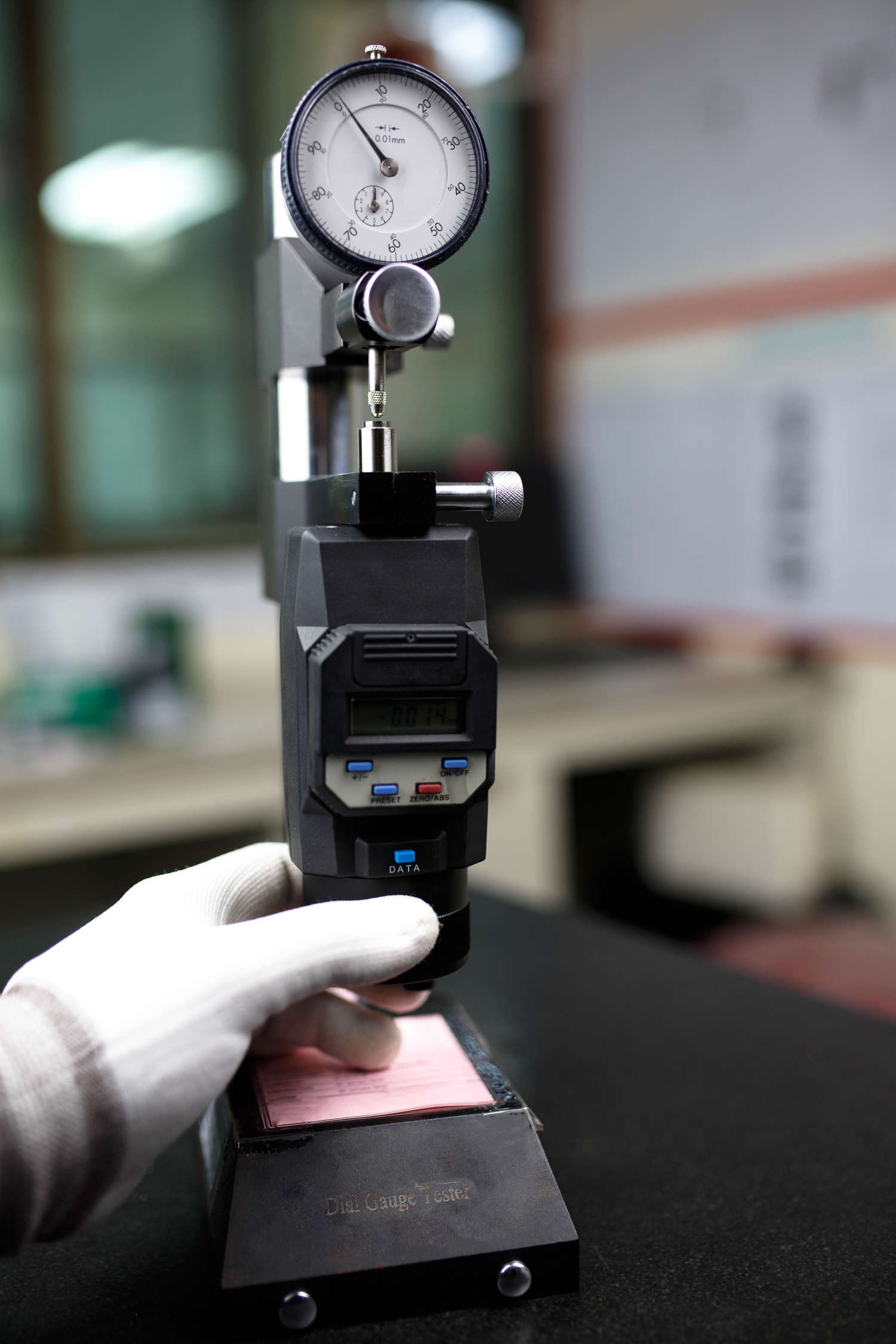How to know that the dial indicator is always in proper condition? We can opt to perform a dial indicator calibration to analyze whether the dial indicator is in a good condition or not.
Calibration is a process where the measured values compare the standard value and find the tolerance range. In this process, a measured measuring tool is compared to a traceable reference device.
It’s known that traceability is a condition where no links are missing to the real agreed reference standard. To get more detail about the traceability standard, you could visit our page here.
Why is Dial Indicator Calibration Important?
Dial indicators are made of several gears and pinions. While using the dial indicator, gear meshes gear all the time. It has a mechanical life. In some time, it can decay inside while meshing with the others. As a result, we must replace them after a period of time.
The bearing itself is the most active part of a dial indicator. It rotates and the friction can make it decay over time. A decayed bearing can cause inaccuracy to the reading. It’s not weird that a jeweled bearing is preferable over a steel bearing due to the jewel’s less friction property. The most common jewel used is industrial ruby.
Besides, there is another benefit of calibration. You can estimate the replacement period of the spare part.
When Should Calibrate the Dial Indicator?
Dial indicators degrade with time and use. It depends on how often we should calibrate our dial indicator. Depending on the following aspects, we can determine the calibration time.
- Industrial Uses: Normally uses of dial indicators in this sector is more often compared to the others. So, the calibration in this sector should be more often too. There are many companies that usually calibrate their instrument once a month, some do it once a 2 months, etc. depending on how frequently the instrument is used.
- Workshop Uses: workshops don’t contain products like the industry. Normally they make tools for the household. Their usages of the instrument are less often than the industry. Therefore, normally they calibrate their instrument once a 6 month or once a year depending on how frequently they use their instrument.
- Educational Uses: In the college or University, these instruments are normally kept in the measurement laboratory. Students normally use this equipment once a week. Most of the time in a year it is not used. So, in this case, the calibration time can be less than the workshops or industries such as once a year or 2 years depending on the University programs.
Why NIST Traceability Matters
Make sure you compare the dial indicator to the standard that is traceable to the NIST. NIST or National Institute of Standards and Technology is a physical science laboratory in the USA.
The reason why NIST traceability matters for dial indicators is because it’s the most authoritative institute in the USA for measuring tool calibration. Though Mitutoyo and other renowned companies provide their traceability certificate (from their labs), NIST traceability can promise us the quality and the accurate product.
Is this a must? In our perspective, this is not a must for every measurement. You could still keep running your measuring instrument without this certificate. However, typical professional works should require this certificate. In case you work in your workshop, you could rely on the certificate issued by the company lab of the tool you are using.
How to Calibrate A Dial Indicator at Home
Requesting a calibration certificate can be expensive way and take time, but you have to calibrate your dial indicator as soon as possible. While you need to be fast, the most common way is the calibration using the gauge block in your resident.
In this process, we will need a surface plate and gauge blocks. The dial indicator is mounted on the stand. And both the stand and the gauge block lie on the surface plate. You have to measure the consecutive values from your dial indicator. And then you’ll find an average of them.
You could make a document to note down the results. Then you could draw a table for each of them.
Summary
Calibration using a block gauge is not only useful for dial indicator but also useful for other linear measuring tools such as micrometer, dial caliper, digital caliper, etc. To get an accurate measurement, we have to examine our dial indicators before taking the measurement. You can calibrate your dial indicator by using a block gauge when you need it soon. When to apply this calibration is also mentioned in the article above.
Other posts under the category “Dial Indicator”:
- What is Dial Indicator? – These are the Measurements that Dial Indicator Handles
- Dial Indicator Body Parts: Internal and External Parts
- Types of Dial Indicator: According to These 3 Factors
- Dial Indicator Vs. Test Indicator: the Plunger and the Lever Models
- How to Use Dial Indicator
- What is Cosine Error? – How Far Its Impact on the Measurement Accuracy of A Dial Indicator
- How to Read Dial Indicator: Reading the .001″ and .0005″ Resolution
- Dial Indicator Calibration: How to Calibrate the Dial Indicator
- Best Dial Indicator Reviews: Top 10 Products
- Best Test Indicator Reviews: Top 10 Products
- Best Dial Bore Gauge Reviews
- Best Digital Indicator Reviews

